It’s important to understand that our galaxy is not the only one of its kind in terms of its formation. In fact, there are many others that are similar to ours, organized into specific groups. The Milky Way is a part of the Local Group, which consists of 54 galaxies and is a part of the Virgo Supergroup. Therefore, we are not alone.
Although many people believe that the Andromeda galaxy is the closest one to us, this is mainly because the Milky Way and Andromeda are currently going through a process of collision and merger. However, if we look at it from a more scientific perspective, there is another galaxy that is actually the closest representative of the spiral type. This dwarf galaxy was discovered relatively recently, so it’s time to update your knowledge.
What is the nearest galaxy?
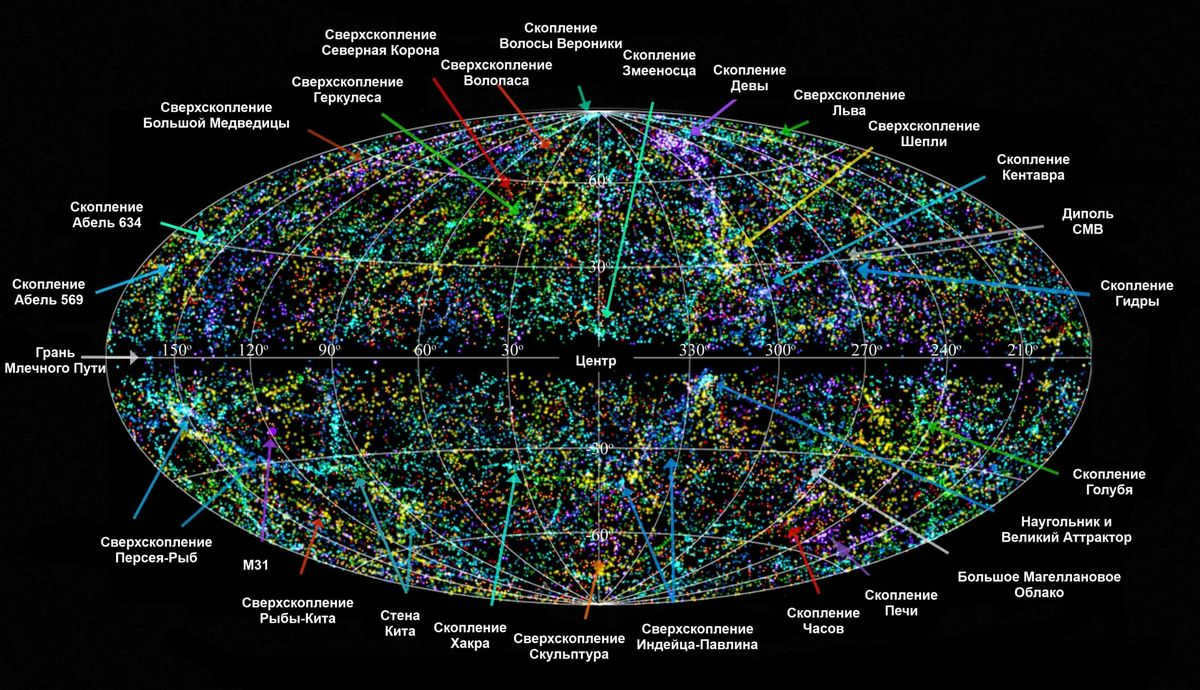

This image captures the grandeur of the Universe, showcasing the presence of 50,000 galaxies. By clicking on the image, you can explore a more detailed and enlarged view.
Currently, the closest galaxy to the Milky Way is the Dwarf Galaxy located in the constellation Canis Major, also known as the Big Dog. It is situated approximately 42,000 light-years from the center of our galaxy and about 25,000 light-years away from our solar system.
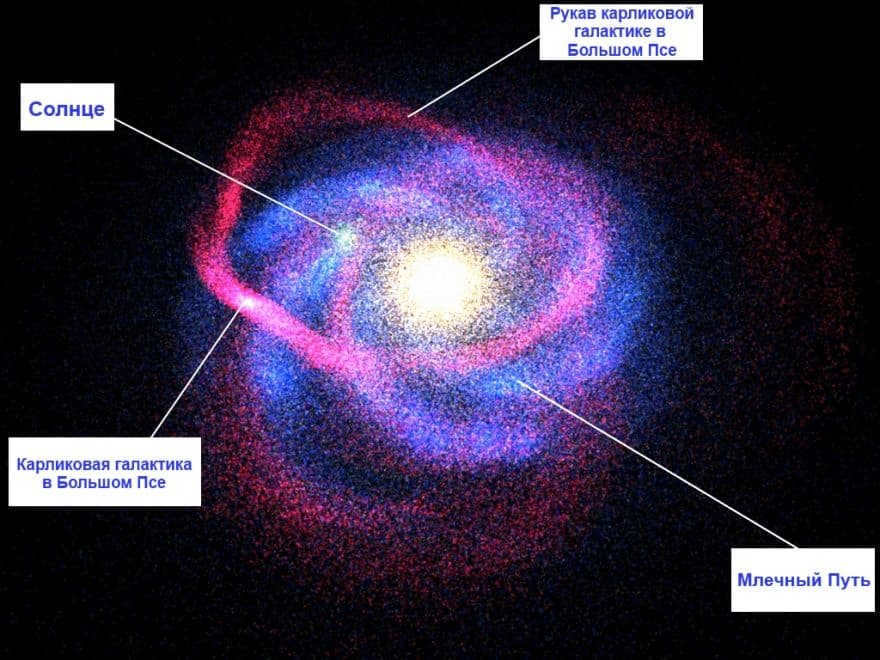

A small galaxy located in the constellation Canis Major, also known as the Big Dog, has been discovered. This dwarf galaxy is believed to have been consumed by the Milky Way and is now being observed as a tidal wave of red light in relation to our galaxy.
Distinctive Features
The dwarf galaxy is estimated to contain around a billion stars, many of which have already entered the red giant phase of their life cycle. Its shape is elliptical, and behind it, a string of stars can be seen. This galaxy also exhibits a unique and intricate ring-like structure known as the Unicorn Ring, which wraps around three times.
During the investigation of the Unicorn Ring, scientists stumbled upon this dwarf galaxy in the Big Dog. It is believed that this galaxy was once assimilated by the Milky Way, and several globular clusters near its center, including NGC 1851, NGC 1904, NGC 2298, and NGC 2808, were originally part of the absorbed galaxy.
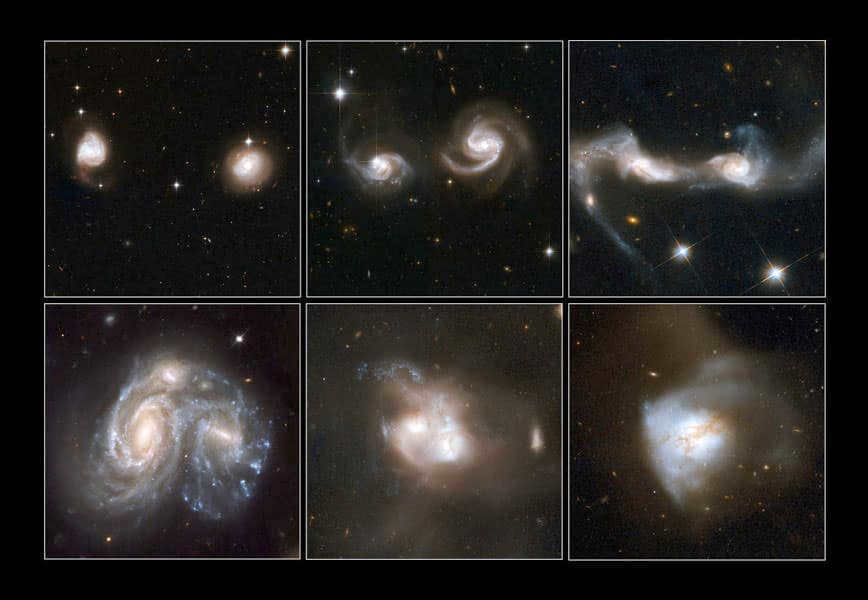
Images of galactic mergers observed by the Hubble telescope
Exploration
The Dwarf Elliptical Galaxy in Sagittarius, previously considered the closest, is located 70000 light-years away from Earth. This distance is shorter than that of the Large Magellanic Cloud, which is 180000 light-years away.
In 2003, a dwarf galaxy was discovered in the Canis Major constellation. Astronomers conducted a comprehensive survey of 70% of the sky using the All-Sky Survey and identified around 5,700 celestial sources emitting infrared light. Infrared light is valuable for observations as it can penetrate through gas and dust. This enabled the discovery of multiple M-type giants in the Canis Major constellation, some of which formed faint arc structures.
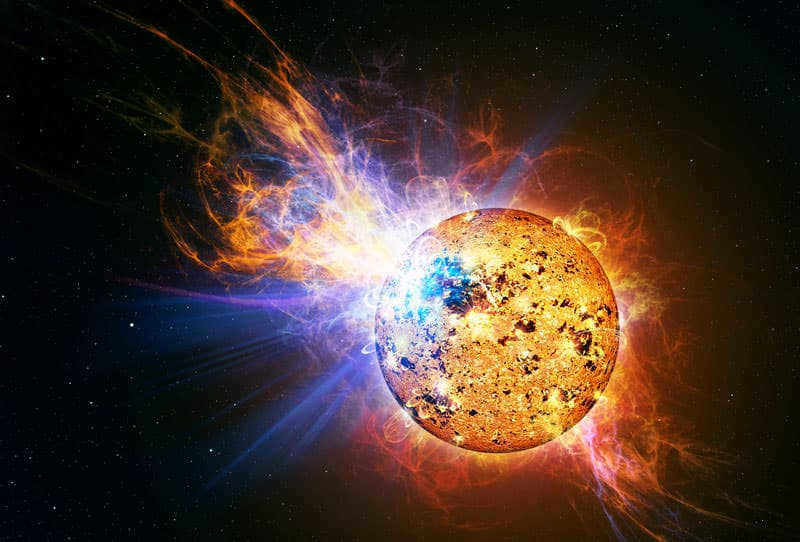
An artistic interpretation of the incredibly strong outburst of the dwarf star EV Lizard.
The discovery of the formation was made possible by the abundance of M-type stars. These low-temperature red dwarfs are not easily detectable due to their dimness, but they can be clearly seen in the infrared spectrum.
This data provided support for the theory that galaxies can grow by assimilating smaller neighboring galaxies. This process was responsible for the creation of our Milky Way galaxy, and it continues to occur to this day. As the former stars of the Dwarf Galaxy in the Big Dog now belong to the Milky Way, we can confidently say that it is the closest galaxy to us.
Back in 1994, the winner of the prize was discovered, shrunk down in the constellation Sagittarius. One of the closest spiral galaxies is Andromeda (M31), which is hurtling towards us at a speed of 110 km/s. In a staggering 4 billion light years, a collision will take place.
What lies ahead for the galaxy nearest to us?
Now you are aware that the dwarf galaxy in the Canis Major is the closest galaxy to the Milky Way. But what fate awaits it? Scientists predict that it will eventually be ripped apart by the gravitational force of the Milky Way. Already, its main body has become distorted and it shows no signs of stopping. The process of accretion will culminate in a complete merger, delivering 1 billion stars to our galaxy, in addition to the 200-400 billion that have already passed through. Thus, the proximity to the nearest galaxy has played a cruel trick on it.


In our previous discussion, we delved into the fascinating world of Andromeda studies and how they provide insights into the evolution of galaxies as a whole. However, when it comes to our very own Milky Way, things seem to deviate from the conventional theories. Hence, it is only fitting that we shift our focus towards exploring the intricacies of our own galaxy this time.
The spinning of the disks
Based on current theories, there are two distinct disks within the Milky Way galaxy – a thin disk that includes our Sun and a thicker disk that was first observed by Gilmore and Reed in 1983. It is important to note that the thin disk is situated within the thicker disk, and their boundaries do not align. Therefore, it is difficult to determine the exact locations of celestial bodies within these disks.
Contrary to the belief that our galaxy lacks a thick disk, it is important to acknowledge that this is not entirely accurate. To better understand this, let’s briefly discuss the distribution of stars within any galaxy, be it spiral, elliptical, or irregular. Stars are spread throughout a spherical region known as the halo.
The distribution of stars in the halo varies greatly, leading to the observation that many spiral galaxies only display the brightest portion – the disk with its spiral arms. As more research is conducted on a galaxy, it becomes increasingly challenging to determine the precise boundary between the disk and the halo.
Take the Milky Way as an example. When observing the galaxy’s center, a distinct change in stellar density along the vertical axis can be observed. This transition separates the thin disk from the thick disk. However, the density of the outer thick disk in the Milky Way is considerably lower compared to both the thin disk and other galaxies. This discrepancy is why Claire Dorman, whom we previously discussed, did not consider it when asserting that the Milky Way’s evolution was much less eventful than that of Andromeda.
Despite ongoing debates among different groups of astronomers, there is consensus about the formation of the thick disk in relation to the galactic center. Whether it is considered a part of the single disk or an independent formation, the thick disk is believed to have originated from the accretion of matter from the outer regions of the Milky Way.
On the other hand, the formation of the thin disk is more straightforward and in line with the principles of kinematics. As per the laws governing the rotational dynamics of a gravitationally closed system, the particles within the thin disk are expected to have the highest linear velocity. This phenomenon occurs within the plane of the disk, which is perpendicular to the axis of rotation.
What is the number of arms in the Galaxy?
When it comes to spiral arms, there is still a lack of clarity. The notion of multiple arms in our galaxy was first proposed by Stephen Alexander in 1852. However, due to technological limitations of telescopes at that time, his hypothesis could not be proven or disproven. The accuracy of photographic plates was not sufficient to measure the movement speed of individual stars and create a rough map of the arm locations.
During World War II, the renowned astronomer Walter Baade took advantage of the unique circumstances created by the war with Japan to make significant progress in his field. At the time, Los Angeles housed the largest telescope, a 2.5-meter one, and Baade utilized a light cloaking mode that was introduced due to the war. With this technology, Baade was able to detect ionized hydrogen in the nearby Andromeda galaxy. This discovery revealed that the hydrogen clouds were located specifically in the arms of the galaxy. By finding similar clouds in our own Milky Way galaxy, we could potentially create a map of its arms as well.
Andromeda is situated in a very advantageous position – almost directly facing us. However, due to the fact that the hydrogen clouds of the Milky Way are positioned on the same plane, it becomes impossible to distinguish which cloud is closer and which is farther away. As a result, Walter Morgan, another astronomer, suggested that instead of focusing on the clouds, we should look for young and vibrant stars that have recently formed from these clouds. At that time, the method of measuring the distance to the stars was already well-established, so Morgan’s proposal was quickly put into action. In 1952, the first map of the structure of the spiral arms of the Milky Way was presented, consisting of a mere thirty (!) stars. However, even with this small number, it was enough to identify the two main arms – the Perseus and Centauri arms. Subsequently, two additional arms were discovered – the Swan and Sagittarius arms.
Radio astronomical observations later confirmed the presence of two “primary” and two “secondary” arms, and this configuration remained unchanged for several decades. These data served as the basis for the creation of an overhead depiction of the Milky Way, which you have likely encountered:
While this is an artistic representation, it was widely circulated in scientific literature to illustrate the morphology of our galaxy.
However, advancements in the past 10-15 years, largely due to the WISE telescope, have brought about significant changes. Infrared observations from WISE have revealed the existence of two additional arms, which are even fainter than the Swan and Sagittarius arms. As of 2015, our Galaxy can be described as a six-armed Shiva, with four well-developed limbs and two less prominent limbs (one of which coincidentally contains our Sun).
Finally, Carraro brings up the last point about the outer disk composition, which refers to everything located beyond the center of the Galaxy and even farther than the Sun.
In 2006, scientists made an interesting discovery that the disk is not completely flat. The tidal forces from the Small and Large Magellanic Clouds, which are satellite galaxies of the Milky Way, have caused the disk to bend. It’s similar to the way a vinyl record warps when left in the sun. There is a heated debate about the exact edge of this disk, with its estimated radius being around 13 kiloparsecs.
However, the crucial point to note is that regardless of its endpoint, the concentration of stars in that area is so minimal that it enables the identification of regions with higher density in the outer disk. These are most likely clusters of cold hydrogen gradually accumulating onto the thin disk, establishing an ideal environment for the birth of new stars. Incidentally, the Milky Way sees an average of one star emerge each year.
To summarize, it is worth mentioning that there is currently a telescope in space, situated at the Earth-Sun system’s second Lagrangian point, which has been operational since last summer. This telescope has the potential to drastically enhance our understanding of the Milky Way. It is a remarkable piece of technology.
Launched in late 2013 with one of its most ambitious goals to date – capturing images of one billion stars in order to create an unparalleled map of the Milky Way. Once completed, this map will provide us with a wealth of knowledge about our galaxy that surpasses what we currently know about its neighboring galaxies.
The universe is a complex system in which its components are intricately connected: planets orbit around a single star, stars come together to form galaxies, and those galaxies then form even larger structures, such as the Local Group of galaxies. Multiplicity is a common occurrence in the vast expanse of the universe, driven by the strong force of gravity. This force creates a center of mass around which both small objects like stars and galaxies, as well as their associations, revolve.
Group Composition
The group composition consists of three primary entities: the Milky Way, the Andromeda Nebula, and the Triangle Galaxy. These objects, along with their satellites, as well as several dwarf galaxies, are believed to be gravitationally attracted to one another. However, it is still uncertain which system these dwarf galaxies belong to. Currently, the Local Group comprises a minimum of fifty significant celestial objects, and as technology for astronomical observations continues to advance, this number is expected to increase.
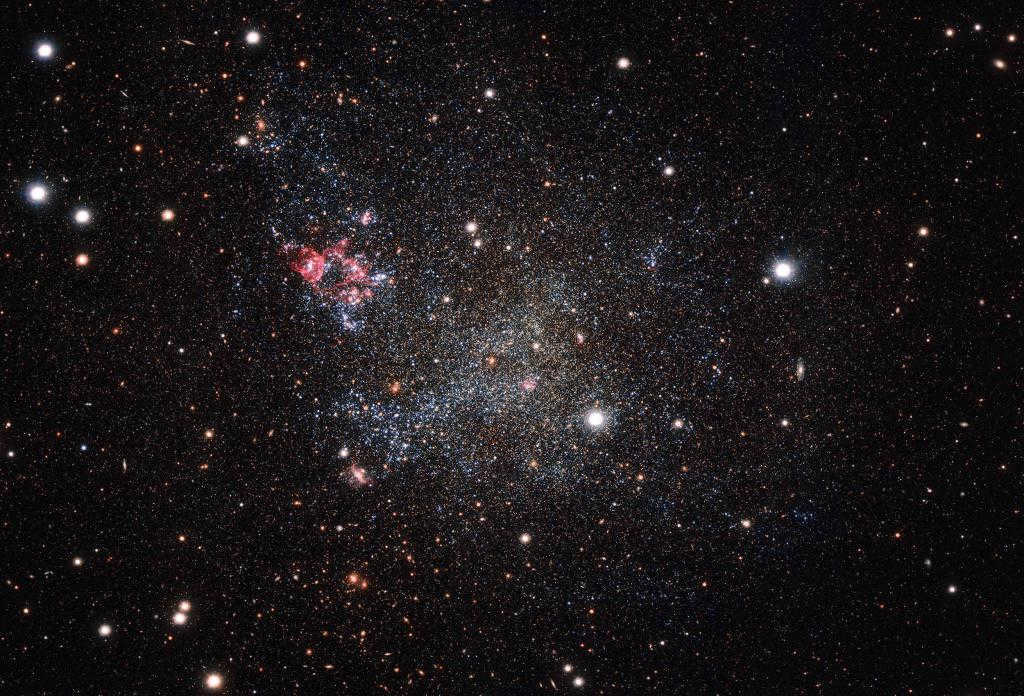
Virgo supergroup
As previously stated, the presence of multiple entities on a cosmic scale is a common occurrence. Although the local group of galaxies is not the largest of these associations, its size is still impressive, spanning a distance of approximately one megaparsec (3.8 × 10 19 km). Alongside other comparable associations, the Local Group is a member of the Virgo supergroup. It is difficult to comprehend its vastness, but its mass is relatively well-established at 2 × 10 45 kg. In total, this association comprises approximately one hundred galactic systems.
Varieties of galaxies that form the Local Group
Scientists have determined that the Local Group’s members are all roughly 13 billion years old. Furthermore, they are composed of the same matter, suggesting a shared origin for the galaxies in the Local Group. These galaxies are not randomly arranged; instead, many of them are clustered around an imaginary line that extends between the Milky Way and the Andromeda Nebula.
The Andromeda Nebula is the largest member of the Local Group in terms of size, with a diameter of 260 thousand light-years (2.5 × 10 18 km). However, the Milky Way stands out in terms of mass, weighing approximately 6 × 10 42 kg. In addition to these large objects, there are also smaller ones, such as the SagDEG galaxy in the Sagittarius constellation.
Most of the galaxies in the Local Group exhibit irregular shapes, although there are also spiral galaxies such as the Andromeda Nebula and elliptical galaxies like SagDEG.
Milky Way subgroup
The accuracy of astronomical observations within the Local Group varies depending on the specific galaxy being observed. This is why the Milky Way is both the most extensively studied celestial object and the source of numerous unanswered questions. To date, researchers have identified at least 14 objects that orbit our galaxy, including the galaxies known as the Big Dipper, Sagittarius, Sagittarius, Sculptor, and Leo.
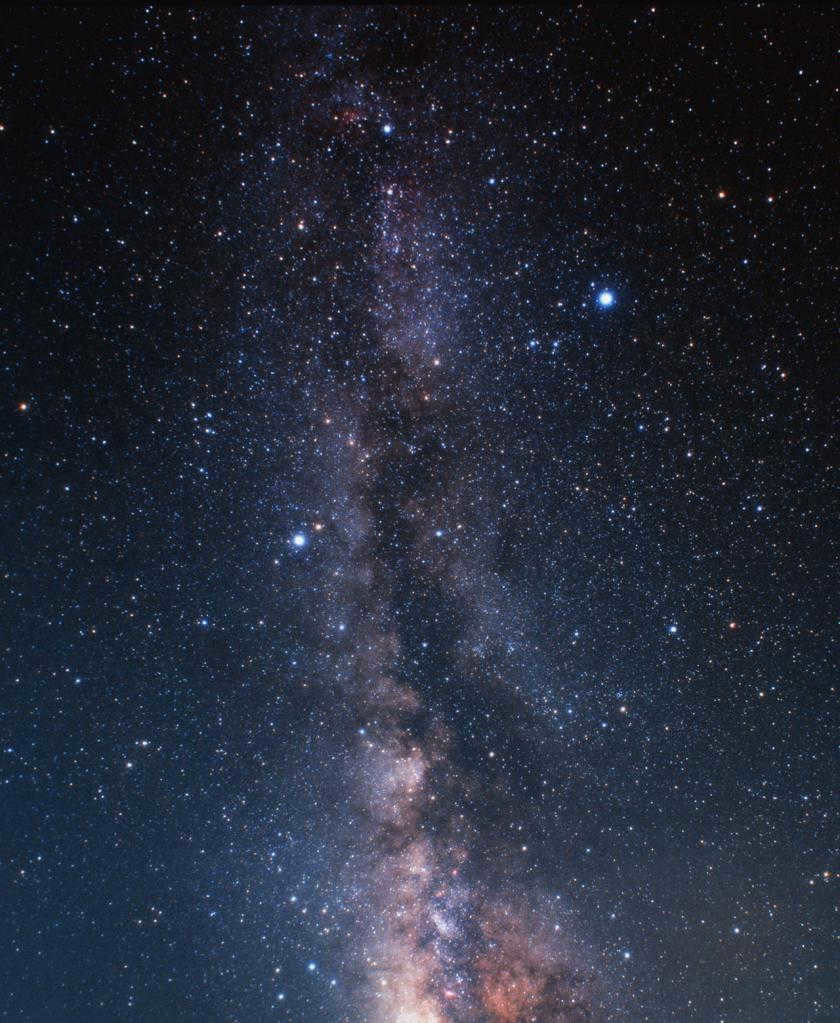
An interesting galaxy in the constellation of Sagittarius is the SagDEG galaxy. It holds the record for being the farthest away from the gravitational center of the Local Group. Scientists estimate that the distance between Earth and this galaxy is approximately 3.2 × 10 19 km.
The Relationship Between the Milky Way and the Magellanic Clouds
There has been an ongoing debate regarding the relationship between the Milky Way and the Magellanic Clouds, two galaxies that are located so close to us that they can be observed with the naked eye from the Southern Hemisphere. For a considerable period of time, it was widely believed that these galaxies were satellites of our own Milky Way galaxy. However, in 2006, with the aid of cutting-edge technology, researchers made a groundbreaking discovery – the Magellanic Clouds were found to be moving at a significantly faster pace compared to other satellites of the Milky Way. This revelation led to the suggestion that the Magellanic Clouds may not have any gravitational connection with our galaxy.

Nevertheless, it is undeniable that the destiny of the Magellanic Clouds is predetermined. They are currently on a trajectory towards the Milky Way, indicating that their assimilation into a larger galaxy is an inevitable outcome. According to scientific projections, this cosmic encounter is expected to occur in approximately 4 billion years.
In five billion years, our galaxy will face a similar destiny, with Andromeda posing as the primary threat. Andromeda is the largest galaxy in the Local Group and is located 2.5 × 10 6 light-years away. It is accompanied by 18 satellites, with M23 and M110 being the most well-known due to their brightness. These catalog numbers were assigned by Charles Messier, a French astronomer from the 18th century.
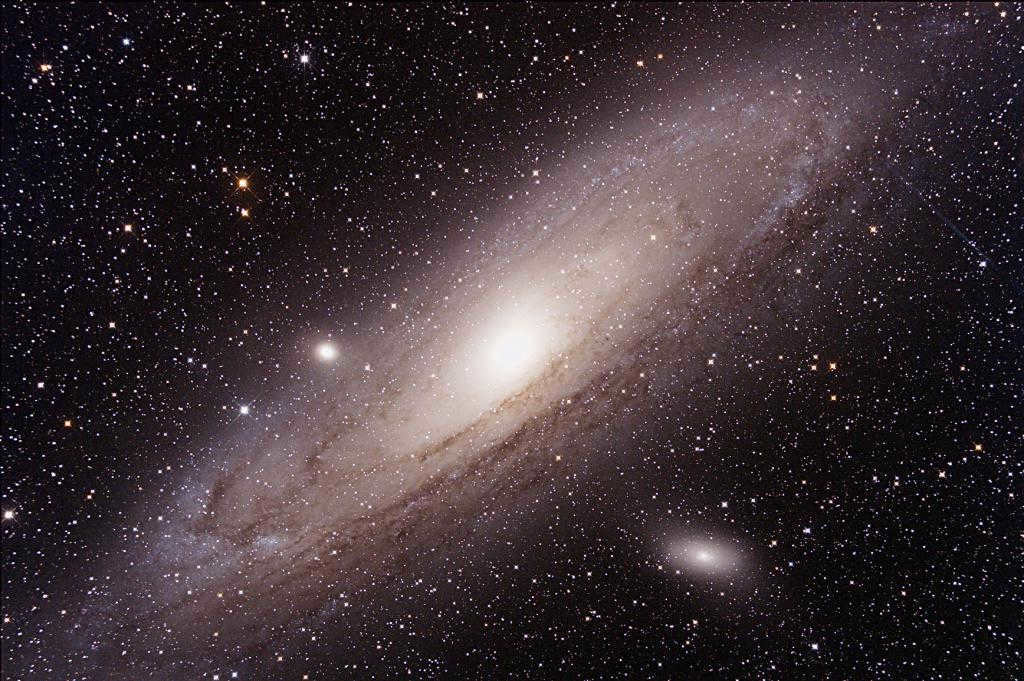
Despite being the nearest galaxy to the Milky Way, the Andromeda Nebula poses quite a challenge to observe due to its intricate composition. Classified as a spiral galaxy, it boasts a prominent core and two expansive spiral arms that gracefully extend outward. However, when viewed from Earth, the Andromeda Nebula presents itself at an oblique angle.
The Triangle Galaxy
Studying the Triangle Galaxy and its satellites is a challenging task due to its significant distance from Earth. The exact number of satellites orbiting the Triangle Galaxy is a subject of debate. One example is the dwarf Andromeda II, which is positioned halfway between the Triangle Galaxy and the Nebula. The limitations of modern observational instruments prevent us from determining whether this space object belongs to the gravitational field of the Triangle Galaxy or the Nebula, the two largest members of the Local Group of galaxies. Despite this, most researchers still believe that Andromeda II is associated with the Triangle Galaxy. However, there are some who argue for renaming it to Andromeda XXII, presenting an opposing viewpoint.
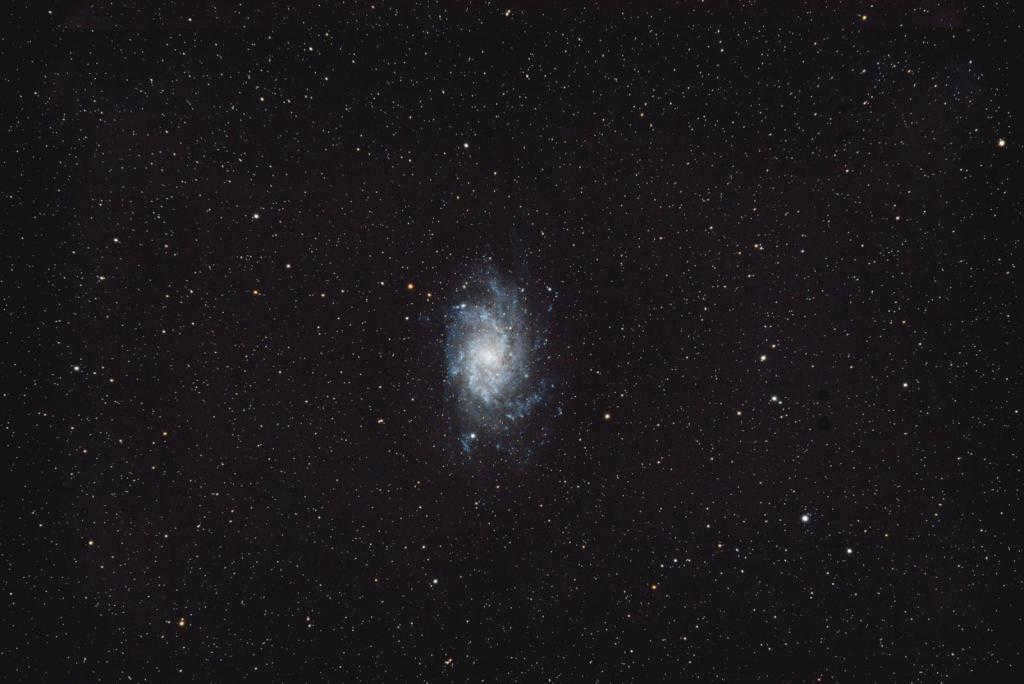
Inside the Triangle Galaxy lies a fascinating celestial marvel – M33 X-7, a black hole with a mass 16 times greater than that of our Sun. This remarkable entity stands as one of the most colossal black holes known to humanity, second only to supermassive ones.
The number of members in the Local Group is constantly changing, not only due to the discovery of other galaxies orbiting the same center of mass. Advances in astronomical techniques have allowed us to realize that objects that were previously thought to be galaxies are actually something else.
This is especially true when it comes to globular star clusters. These clusters consist of a large number of stars that are all gravitationally bound to a single center. They have a spherical shape that is similar to galaxies. However, there are quantitative differences that help us distinguish them: the density of stars in globular clusters is much higher, which also means that their diameter is larger. For example, in the region near the Sun, there is an average of one star per 10 cubic parsecs. In globular clusters, this number can be 700 or even 7000 times higher.
Palomar 12, located in the constellation Capricorn, and Palomar 4, found in the Big Dipper, have traditionally been classified as dwarf galaxies. However, recent research has indicated that they are actually quite sizable globular clusters.
History and Challenges in the Study of the Local Group of Galaxies
Until the early 20th century, it was commonly believed that the Milky Way and the universe were one and the same. It was thought that all matter existed within our own galaxy. However, in 1924, Edwin Hubble observed several cepheids – stars that vary in brightness with a distinct period – using his telescope. The distances to these stars were clearly greater than the size of the Milky Way, providing evidence for the existence of extragalactic objects. This discovery revealed that the Universe is much more intricate than previously believed.

One could make the case that the exploration of the universe was just commencing. This includes the Local Group. The SagDEG galaxy was uncovered fairly recently, but its discovery was hindered not only by its dimness, which went unnoticed by telescopes for quite some time, but also by the existence of non-radiating matter in the cosmos – the elusive “dark matter”.
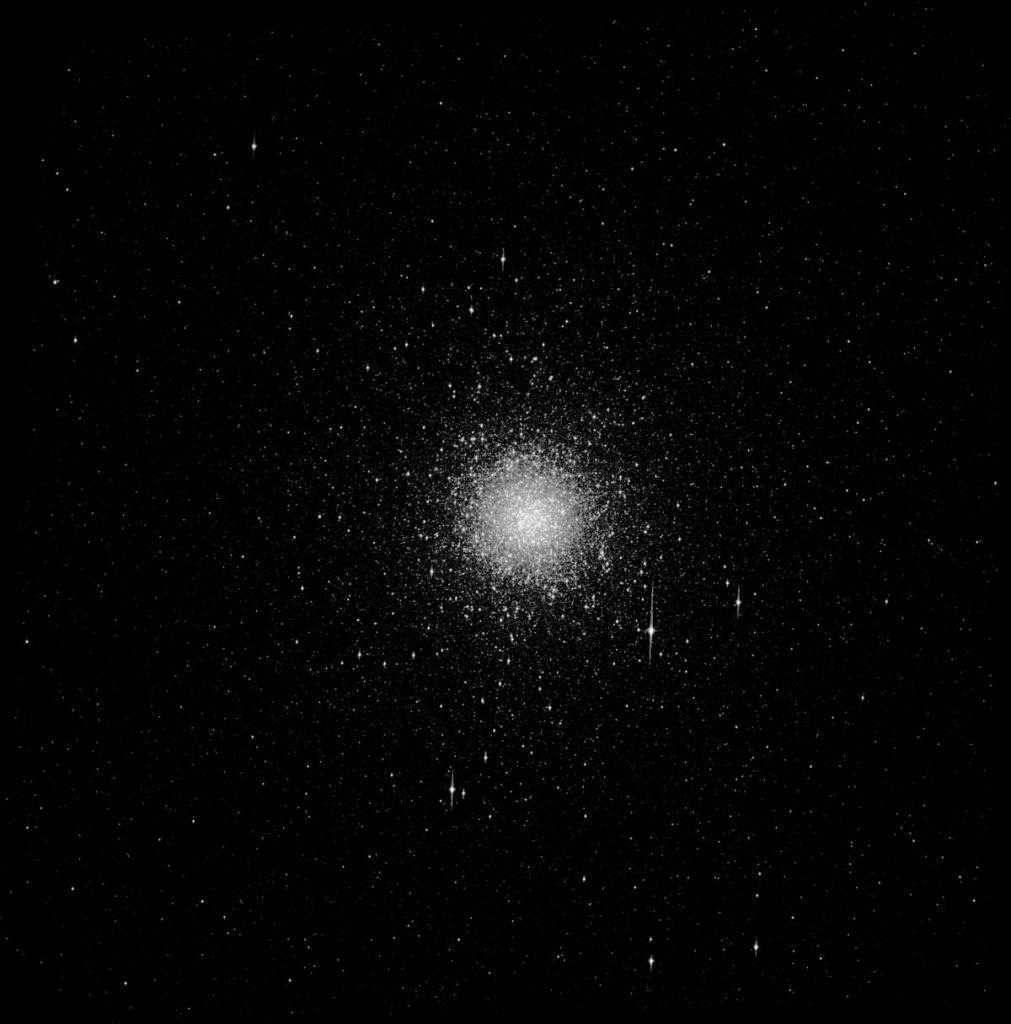
Furthermore, the presence of dispersed interstellar gas, typically composed of hydrogen, and cosmic dust complicates the observations. Nonetheless, the observational technique continues to evolve, offering the promise of new astounding discoveries in the future and the opportunity to refine existing knowledge.
Andromeda, also referred to as M31 and NGC224, is a spiral galaxy situated approximately 780 kp (2.5 million light-years) away from Earth.
The Andromeda Galaxy, which is named after the mythical princess of the same name, is the closest galaxy to the Milky Way. According to observations in 2006, it is estimated to have about a trillion stars, which is at least twice as many as the Milky Way’s 200-400 billion stars. Scientists predict that in approximately 3.75 billion years, the Milky Way and the Andromeda Galaxy will collide, resulting in the formation of a massive elliptical or disk galaxy. However, before delving into that, let’s explore the appearance of the “mythical princess.”
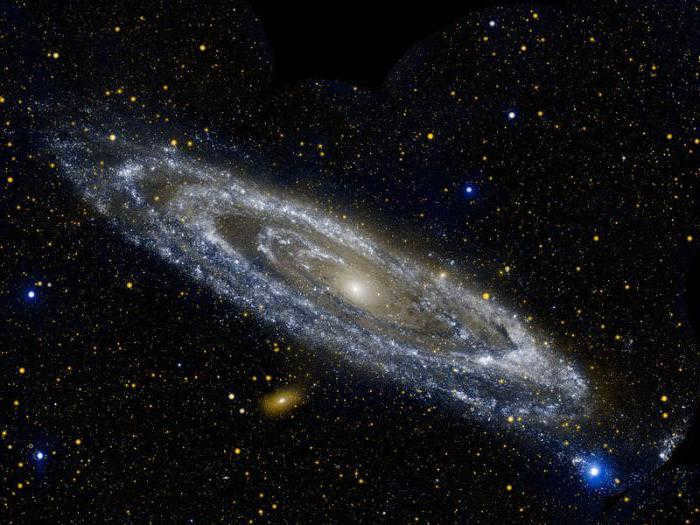
The picture depicts Andromeda, a galaxy with striking blue-white stripes. These stripes encircle the galaxy, encompassing hot, luminous giant stars. In contrast to these vibrant rings, dark blue-gray bands stand out and mark the areas where star formation is beginning within dense cloud cocoons. While visible light reveals Andromeda’s rings to resemble spiral arms, in ultraviolet light, these formations take on the appearance of ring structures. NASA’s telescope previously discovered these ring-like formations. Astronomers theorize that these rings are evidence of the galaxy’s creation through a collision with a neighboring galaxy over 200 million years ago.
Andromeda’s moons
Similar to our own Milky Way, Andromeda possesses a variety of diminutive moons, with 14 having already been identified. The most famous among them are M32 and M110. Naturally, the likelihood of individual stars from each galaxy colliding is quite low, given the vast distances that separate them. As for what will actually transpire, scientists currently harbor rather nebulous notions. Nonetheless, they have already devised a moniker for the forthcoming celestial offspring. Mlecomeda – this is the proposed name for the as-yet-unborn colossal galaxy by the scholars of the scientific community.
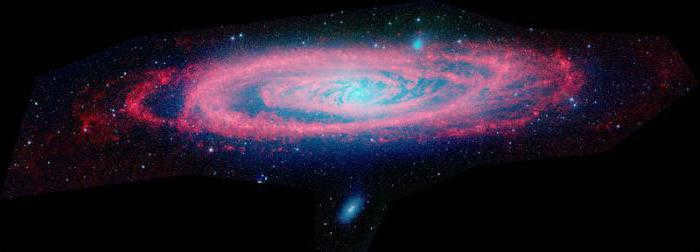
When Stars Collide
Andromeda, a galaxy containing 1 trillion stars (10 12), is much larger than the Milky Way, which has 1 billion stars (3*10 11). However, the likelihood of these celestial bodies colliding is incredibly low due to the immense distance separating them. For instance, the closest star to the Sun, Proxima Centauri, is situated 4.2 light-years away (4*10 13 km) or approximately 30 million solar diameters (3*10 7). To put this into perspective, imagine our Sun as a table tennis ball. If that were the case, Proxima Centauri would appear as a pea located 1100 km away. Furthermore, the width of the Milky Way itself would stretch a staggering 30 million km. Even in the galaxy’s central region, where stars are most densely clustered, they are still separated by distances of 160 billion km (1.6*10 11). This can be visualized as one table tennis ball for every 3.2 km. Consequently, the probability of two stars colliding during a galaxy merger is incredibly minuscule.
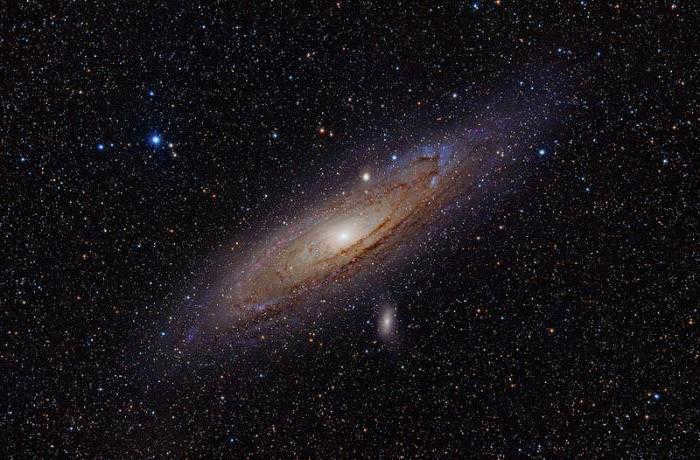
Collision of Black Holes
The Andromeda Galaxy and the Milky Way both contain massive black holes at their centers: Sagittarius A (with a mass of 3.6*10^6 solar masses) and an object located in the P2 cluster of the Galactic nucleus. Over time, these black holes will gradually approach each other and eventually merge, causing the stars in the galaxy to be affected by their gravitational pull and move into higher orbits. This process is expected to take millions of years. Once the black holes come within a distance of about a light-year from each other, they will start emitting gravitational waves. The release of this energy will further enhance the orbital dynamics until the merger is complete. According to simulations conducted in 2006, it is predicted that during this event, Earth may initially be drawn towards the center of the newly formed galaxy, then pass close to one of the black holes before being expelled beyond Mlecomeda.
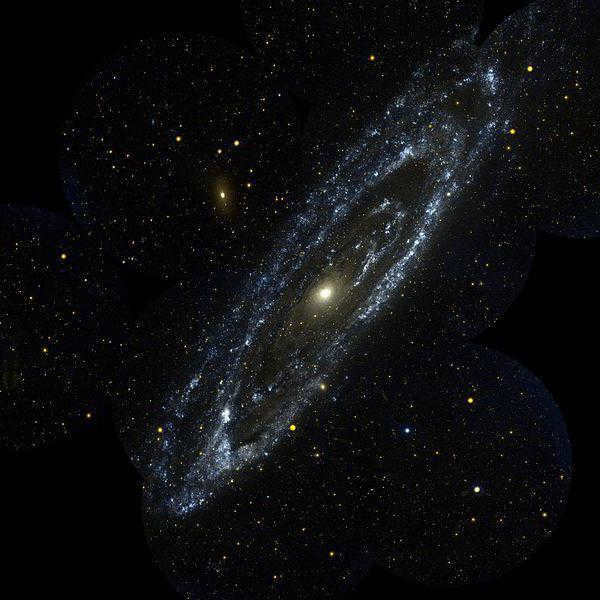
Evidence supporting the hypothesis
The theory has been confirmed by various pieces of evidence. The Andromeda Galaxy is currently moving towards us at a velocity of approximately 110 kilometers per second. Prior to 2012, it was uncertain whether a collision would occur. However, the Hubble Space Telescope provided valuable data that strongly suggested an impending collision. By tracking Andromeda’s movements between 2002 and 2010, scientists were able to predict that the collision would take place in approximately 4 billion years.
Similar occurrences are quite common in space. For instance, it is believed that Andromeda has already interacted with at least one other galaxy in the past. Additionally, certain dwarf galaxies like SagDEG are still colliding with the Milky Way, resulting in the formation of a single entity.
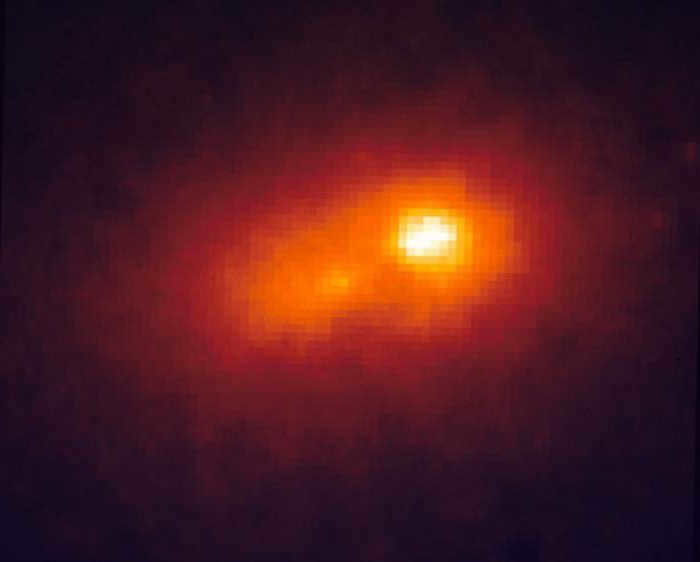

Research has also indicated that M33, also known as the Triangle Galaxy, which is the third largest and brightest member of the Local Group, will also participate in this event. It is most likely that M33 will eventually enter the orbit of the entity formed after the merger and, in the distant future, undergo a final merger. However, the possibility of M33 colliding with the Milky Way before Andromeda approaches, or our Solar System being ejected from the Local Group, has been ruled out.
Destiny of the Solar System
A team of Harvard scientists has determined that the timing of the galactic merger will be influenced by the tangential velocity of the Andromeda galaxy. Through careful calculations, they have predicted a 50% probability that during the merger, the Solar System will be propelled three times farther away from the center of the Milky Way than its current position. The behavior of the Andromeda galaxy during the merger remains uncertain, posing a potential risk to planet Earth. According to scientists, there is a 12% chance that we will be displaced beyond our previous “home” after the collision. However, it is unlikely that this event will have severe detrimental effects on the Solar System, and celestial bodies will remain intact.
Assuming we exclude any form of planetary manipulation, it is anticipated that by the time the galaxies collide, the Earth’s surface will become excessively hot, resulting in the complete absence of liquid water and subsequently, life.
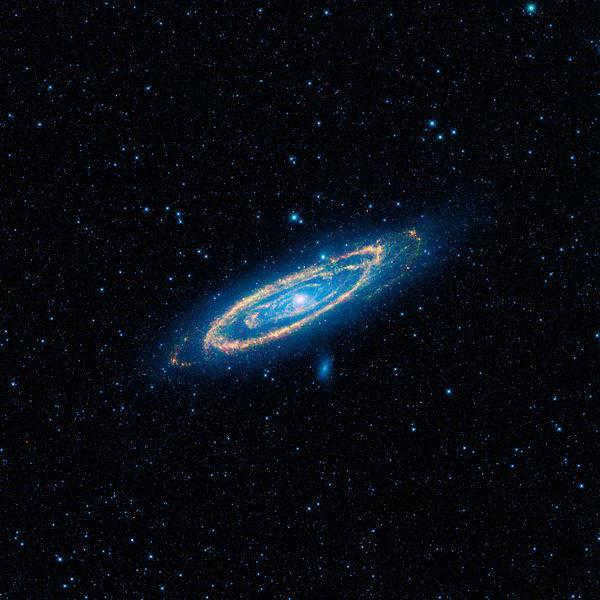
Possible adverse effects
When two spiral galaxies combine, the hydrogen found in their disks gets compressed, leading to an increase in the formation of new stars. This phenomenon can be observed in the interacting galaxy NGC 4039, also known as “Antennas”. However, in the event of a merger between Andromeda and the Milky Way, it is expected that there will be minimal gas remaining in their disks. As a result, star formation would not be as intense, although the formation of quasars is still likely to occur.
The scientists have given the tentative name Mlecomeda to the galaxy formed by the merger. According to the modeling results, the resulting object is expected to have an elliptical shape. The center of the galaxy will have a lower density of stars compared to the elliptical galaxies seen today. However, there is also a possibility of it having a disk shape. The final outcome will largely depend on the amount of gas that remains within both the Milky Way and Andromeda galaxies. In the not-too-distant future, the remaining galaxies in the Local Group will merge together, marking the beginning of a new stage in their evolution.
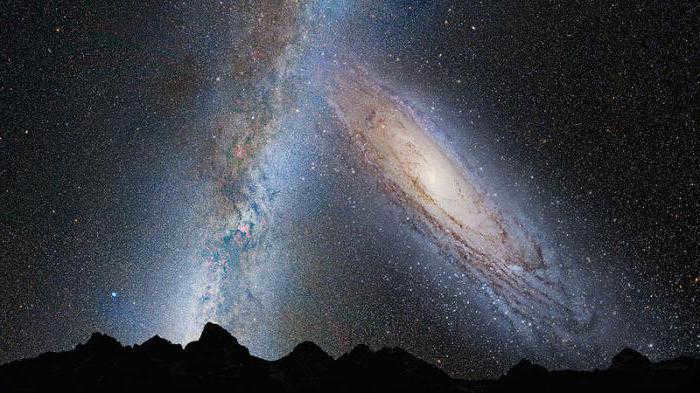
Interesting Information about Andromeda
- Andromeda is the largest galaxy in the Local Group, but it may not be the most massive. Scientists believe that the Milky Way contains more dark matter, which contributes to its greater mass.
- Scientists study Andromeda in order to gain insights into the origin and evolution of similar celestial formations, as it is the nearest spiral galaxy to us.
- Andromeda is a captivating sight from Earth, and many individuals have even been able to capture stunning photographs of it.
- Andromeda boasts an exceptionally dense galactic core. In addition to the presence of enormous stars at its center, there is also believed to be at least one supermassive black hole concealed within this core.
- The gravitational interaction with two neighboring galaxies, M32 and M110, has caused the spiral arms of the Andromeda Galaxy to become bent.
- Andromeda is home to at least 450 globular star clusters, including some of the most densely packed ones ever discovered.
- With the naked eye, the Andromeda Galaxy is the farthest object that can be seen. To catch a glimpse, find a dark spot with a clear view of the sky.
To conclude, I encourage readers to spend more time gazing at the starry sky. There are countless new and mysterious wonders waiting to be discovered. Make time to observe the cosmos during the weekend, as the Andromeda Galaxy is a truly breathtaking sight.
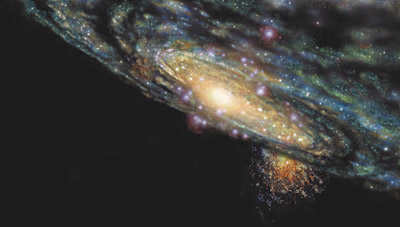
More than 20% of the cosmos remains concealed
due to the presence of dust and stars within the Milky Way’s disk. However, in recent times, scientists have discovered methods
to penetrate this obscuration.
When we find ourselves in a remote location, far from the bright lights of the city, an incredible sight awaits us. In the darkness of the night, the vast disk of our galaxy, known as the Milky Way, becomes visible. Its flickering light stretches across the sky, creating a wide band of illumination. This beautiful glow is produced by billions of stars and the scattering of light on minuscule particles of dust and gas in the space between stars. Positioned approximately 8 kiloparsecs from the center of our galaxy, we find ourselves in the middle of this remarkable disk. However, for astronomers studying the universe beyond our own galaxy, this luminous spectacle poses a significant challenge. Unfortunately, the disk obstructs approximately 20% of all cosmic radiation, concealing a wealth of fascinating discoveries within this hidden portion.
As an example, somewhere behind the disk lie two crucial components of the largest structures in the nearby Universe: the Perseus-Biscuit supercluster of galaxies and the “Great Attractor,” an immense conglomerate of matter that was discovered through the analysis of the spatial movements of thousands of galaxies. Through observations, a significant number of bright and nearby galaxies have been identified in the direction of the Milky Way. Additionally, there is a vast number of undetected nearby galaxies lurking beyond the disk of our own Galaxy, which presents an intriguing prospect. The lack of knowledge about what lies beyond this screen hampers researchers’ ability to create a comprehensive map of the matter distribution in our section of the cosmos. Consequently, this impedes the exploration of fundamental questions in cosmology, such as the sizes and formation processes of cosmic structures, as well as the total density of matter in the Universe.
The recognition of the fact that light from galaxies is absorbed by the disk of the Milky Way first came about when astronomers began to differentiate between external galaxies and internal nebulae, both of which appeared as faint and elongated objects. Because galaxies were being observed everywhere except in the vicinity of the Milky Way at that time, this region became known as the “the avoidance zone.” Today, scientists are aware that external galaxies consist of billions of stars and countless amounts of gas and dust. In the “the avoidance zone,” light from galaxies typically gets lost within the brightness of the numerous surrounding stars or gets absorbed by the dust within our own Galaxy.
The zone saturated with background objects in the sky is generally avoided by astronomers involved in extragalactic astrophysics. However, a shift in awareness occurred two decades ago when observations revealed what we were missing out on. Simple measurements of the cosmic background radiation, a remnant of the big bang, unveiled a 180-degree asymmetry called a dipole. This dipole is characterized by a 0.1% increase in the temperature of the cosmic background radiation in one direction and a corresponding decrease in the opposite direction. The accuracy of these measurements was confirmed by the studies conducted by the Cosmic Background Explorer satellite between 1989 and 1990, which indicated that our galaxy, along with its neighboring galaxies that form the Local Group, is moving towards the constellation Hydra at a speed of approximately 600 km/s. This direction was determined after accounting for all known motions, including the rotation of the Sun around the center of the Galaxy and the movement of our galaxy towards its neighbor, the spiral galaxy Andromeda.
What is the reason for this movement, which is evident in a small deviation from the “uniform” expansion of the Universe? Groups and clusters of galaxies come together, forming superclusters, while other areas are left without galaxies. The unevenly distributed mass of matter surrounding a Local Group can create an imbalanced attraction, pulling neighboring galaxies in a specific direction. Initially, it may be difficult to comprehend how galaxies can affect each other across such vast distances. However, when considering their masses, it becomes apparent that galaxies are closer to one another than individual stars within our Galaxy.
The anticipated speed of the Local Group can be determined by adding together the gravitational forces generated by all identified galaxies. Despite the fact that the resultant vector is within 20 degrees of the observed cosmic background dipole, the calculations remain highly uncertain, primarily due to the exclusion of galaxies beyond the avoidance zone.
Astronomers introduced “attractors” as a solution to the lingering disagreement between the direction of the dipole and the expected velocity vector. One group of researchers, known as the “Seven Samurai,” utilized the movements of numerous galaxies to deduce the presence of a Great Attractor located approximately 60 Mpc away. This discovery was discussed in the article “The Large-Scale Streaming of Galaxies” by Alan Dressler, published in the September 1987 issue of Scientific American. Interestingly, the Local Group of galaxies finds itself caught in a cosmic competition between the Great Attractor and the Perseus-Biscuit supercollision, both of which are situated at a similar distance. To determine the outcome of this gravitational war, astronomers must ascertain the masses of the concealed components within these structures.
Raising the Curtain
When examining the movement of the primary mass within the Local Group, it is imperative to acknowledge all of the neighboring galaxies. Due to the gravitational force being dependent on the square of the distance to the object, it is the nearby galaxies that have the greatest impact, despite their relatively small masses. Interestingly, out of the eight most luminous galaxies, five lie within the zone of avoidance. These galaxies are so close and radiant that their light is able to penetrate through the curtain. These galaxies are part of the Centauri A and IC342/Maffei groups, which are neighboring clusters to our own Local Group. In addition to the known members of these groups that astronomers are able to observe, there are likely many others whose light is completely obscured by our own Milky Way Galaxy.
Without a doubt, our current vantage point could be even more unfavorable. If we happened to reside in the neighboring Andromeda galaxy, the obstructed portion wouldn’t undergo much change, however, our view of the Virgo galaxy cluster would be significantly hindered. However, even the most resilient optimist must concede that we possess a certain degree of ill fortune. This is due to the fact that the Sun’s orbit is inclined towards the plane of the Galaxy, causing the Solar System to partake in an oscillatory motion above and below the plane. Presently, we find ourselves merely 10 parsecs away from it. Had we existed 15 million years ago, we would have been situated approximately 100 parsecs above the plane, beyond the dense absorption layer, and thus able to observe one side of the current exclusion zone. In another 35 million years, we will traverse the disk of the Milky Way and emerge on the opposite side.
Many astronomers are not willing to wait for such a long time to study the extragalactic sky beyond the avoidance zone. So what can they do in the meantime? Well, one option is to carefully examine the existing optical images. While the dust in the avoidance zone does make it difficult to see some galaxies, there are still a few that have light shining through. However, these galaxies appear quite dim and opaque as they get closer to the middle of the galactic plane. This unique appearance, combined with the abundance of background stars, makes it impossible to use standard image analysis software to search for galaxies. As a result, several groups of astronomers have had to resort to the old-fashioned method of visually analyzing images. They have been going through photographic plates and films from the Schmidt Telescope at Palomar Observatory, as well as similar telescopes in the Southern Hemisphere, which have been used since the 1950s. This painstaking process has been going on for the past 10 years, and so far, they have managed to identify around 50,000 previously undocumented galaxies in the catalogs.
However, in areas with significant dust absorption, galaxies become completely hidden, necessitating the use of alternative methods, such as shifting to longer-wavelength observations. This is because as the wavelength increases, the interaction between the incident radiation and tiny dust particles decreases. One of the most preferred options is observing at a wavelength of 21-cm, which corresponds to the spectral line of neutral hydrogen. This allows for the detection of gas-rich spiral galaxies, which are typically faint, as well as the numerous dwarf galaxies, with the exception of gas-poor elliptical galaxies.
In 1987, Patricia A. Henning from the University of New Mexico and Frank J. Kerr from the University of Maryland started an innovative project. They utilized the 91-meter Green Bank radio telescope in W.Va. to observe a randomly selected area in the avoidance zone and identified 18 previously unknown galaxies. Unfortunately, the telescope collapsed before they could complete their research. However, a more comprehensive investigation was initiated by an international project that involved the authors of this paper. They utilized the 25-meter Dwingeloo radio telescope in Holland for a long-term study aimed at locating all spiral galaxies in the northern section of the avoidance zone, within a range of 55 Mpc. To date, approximately 40 galaxies have been discovered as a result of this project.
In 1997, a new global initiative was launched to conduct a comprehensive study of the southern region of the Milky Way. The project, headed by Lister Staveley-Smith from the Australia Telescope National Facility at Marsfield and co-authored by Kraan-Korteweg, aimed to identify galaxies within a range of 150 Mpc. To accomplish this, a specialized instrument, the 64-meter radio telescope at Parkes, Australia, was utilized. With over 100 galaxies already discovered, it is anticipated that the survey will uncover several thousand more in its entirety.
Radio frequency bands are not the only areas of interest in the avoidance zone. In addition, infrared radiation is less prone to being absorbed by dust particles compared to visible light. During the early 1980s, the entire sky was surveyed by the Infrared Astronomical Satellite (IRAS) using far infrared wavelengths (which are closer to radio waves). This survey successfully identified galaxies that emit bright infrared light, mostly consisting of spiral galaxies with intense star formation, where stars are formed rapidly and in large quantities. Currently, the galaxies identified by IRAS are being re-evaluated using images taken in the near-infrared range (which is closer to visible light).
By the year 2000, two surveys in the near-infrared range were set to be completed. The first one is the Two Micron All-Sky Survey, which is an American project. The second one, called DENIS, is a European project that focuses on studying the southern sky. Both surveys involve capturing digital images using three different wavelengths, which allow for the examination of old stellar populations within galaxies. These surveys are particularly effective at detecting elliptical galaxies, which are typically found in the central regions of densely populated galaxy clusters. As a result, they serve as a valuable complement to far-infrared and radio surveys that primarily target spiral galaxies. Preliminary studies have shown that near-infrared surveys can identify galaxies that would have otherwise gone undetected using optical photographic plates due to their low sensitivity threshold. Unfortunately, neither optical nor infrared wavelengths are capable of detecting galaxies in the densest areas of the galactic plane.
Milky Way prey
These techniques are gradually uncovering a concealed fifth part of the Universe. One of the most astonishing findings occurred in 1994 when Rodrigo A. Ibata from the University of British Columbia, Gerard F. Gilmore from the University of Cambridge, and Michael J. Irwin from the Royal Greenwich Observatory, while investigating the stars of our Galaxy, inadvertently stumbled upon a galaxy in very close proximity. Known as the Sagittarius dwarf, it is the nearest galaxy that we are aware of, being just 24 kiloparsecs away from the Solar System, which is less than half the distance to the next closest Large Magellanic Cloud. In reality, it is situated inside our very own Galaxy, far away from the center of the galaxy.
Because Sagittarius dSph is located just beyond the central bulge of our Galaxy, it cannot be easily distinguished without employing specific techniques. The discovery of this galaxy was made by measuring the radial velocities of stars: researchers identified a cluster of stars with a radial velocity that differed from that of our Galaxy. By selecting stars with a particular velocity and stars that possessed the same brightness and color, while excluding known background stars, a map of this dwarf galaxy was created. With an apparent size of several degrees, it stands as the largest observable structure in the sky after the Milky Way. This apparent size corresponds to a diameter of at least 8.5 kiloparsecs, approximately one-fifth the size of our Galaxy, and its mass is 1000 times smaller.
Many well-known models of galaxy formation propose that the formation of large galaxies occurs through a prolonged process of assimilating a significant number of smaller galaxies. While this process is rarely observed, a similar mechanism is believed to be occurring. The Sagittarius galaxy appears to have experienced some degree of destruction due to tidal forces exerted by our own Milky Way. However, the extent of destruction to the core of this galaxy is surprisingly minimal. Despite orbiting our galaxy at least 10 times, the dwarf galaxy remains largely intact, suggesting the presence of substantial amounts of dark matter. Regardless, its demise is inevitable; calculations indicate that it will be completely absorbed into our galaxy within a billion years. The discovery of this galaxy serves as evidence that galaxy takeovers are occurring in our current era, and that they do not necessarily result in the destruction of the larger galaxy’s disk.
Sagittarius, a surprising finding in the investigation of the avoidance zone, was discovered by the Dwingeloo Observatory of Darkened Galaxies program team in August 1994. During their study of radio spectra at 21cm, they focused on a specific area within the avoidance zone where numerous Milky Way fibers vanish near the IC342/Maffei group. Among the recorded spectra, one particularly intriguing signal was detected in the direction of the Cassiopeia constellation. However, this radio signal was prone to interference, resulting in a potentially misleading extragalactic radio profile. Additionally, the image was obscured by gas emissions from our own galaxy. Despite these challenges, a series of tests confirmed the validity of the signal, ultimately leading to the remarkable discovery of a previously unknown neighboring galaxy.
George K. T. Hau, a researcher from the University of Cambridge, made a remarkable discovery while examining the optics. He detected a very faint object that aligned perfectly with the radio signal’s position. Subsequently, more detailed images of this object, known as Dwingeloo 1, were captured using various telescopes. These images unveiled the galaxy’s true form: a bar-shaped structure with two distinct spiral arms. If Dwingeloo 1 were not obscured by the Milky Way, it would be among the top 10 brightest galaxies visible in our sky. Analysis of its rotational speed suggests that it possesses a mass equivalent to one-third of our galaxy, placing it in the same league as M33, the third most massive galaxy in the Local Group, after our galaxy and the Andromeda galaxy.
During observation of Dwingeloo 1, conducted by the Westerbork Synthesis Radio Telescope in the Netherlands, a second galaxy named Dwingeloo 2 was discovered just 20 arc minutes away from the first one. Dwingeloo 2 is a dwarf galaxy with a diameter that is half as large and a mass that is 10 times smaller than Dwingeloo 1. This pair of galaxies is located at a distance of approximately 10 Mpc and is in close proximity to the Local Group. It appears to be gravitationally bound to the IC342/Maffei group. Recently, several other galaxies within this complex have also been identified.
Although there are still many unexplored regions within the avoidance zone, astronomers have already identified other nearby galaxies that are similar in size to the Andromeda galaxy. Our Galaxy and Andromeda are the dominant galaxies within the Local Group. However, it is still possible to discover other large nearby galaxies, which could help resolve inconsistencies in the kinematics of our close neighborhood.
The exploration of the zone of avoidance has also completely changed the perspective of astronomers on the far-reaching Universe. By utilizing a 100-meter radio telescope located near Effelsberg in Germany, scientists have made an exciting discovery of a previously unknown cluster in the constellation Corma (Puppis), which is located 20 Mpc away. Taking into account other factors, such as the examination of galaxies found through the IRAS satellite, it can be concluded that the movement of the Local Group aligns more accurately with the position of the cosmic background dipole when the influence of the cluster in Korma is taken into consideration.
Is it possible for this investigation to provide new insights into the Great Attractor? Despite the fact that the number of visible galaxies is growing in the direction that is believed to lead to the Great Attractor, scientists are still unable to locate its exact center. In the 1980s, George O. Abell was able to roughly map out the cluster in the general vicinity; this was the sole cluster known to be in the avoidance zone at the time. However, the cluster only contained 50 galaxies, which is not enough mass to serve as a significant attractor.
The true wealth and importance of this cluster have only recently become evident. Kraan-Korteweg and Patrick A. Woudt from the European Southern Observatories in Garching, Germany, have recently uncovered an additional 600 galaxies in this cluster. In collaboration with colleagues from France and South Africa, they have conducted spectral observations of the cluster using various telescopes in the Southern Hemisphere. The observed radial velocities of the galaxies indicate that the cluster is actually incredibly massive, and when combined with the well-known cluster in Coma (known as Veronica’s Hair), it contains approximately 10,000 times the mass of our own Galaxy. Eventually, astronomers were able to pinpoint the center of the Great Attractor. This discovery, along with the surrounding clusters, provides a complete explanation for the observed galaxy movements in the nearby universe.
The structure of the cosmic hierarchy continues beyond this point. Investigations in the avoidance region have revealed even more substantial aggregations. A super cluster, situated approximately 100 Mpc away in the Ophiuchus constellation (also known as Serpentine), was documented by Kenichi Wakamatsu from Gifu University in Japan. Despite being located beyond the center of our own Galaxy and containing a high density of background stars, Wakamatsu was able to identify thousands of galaxies within this cluster using sky survey plates. The supergroup in Serpentine may be linked to another supergroup found in the Hercules constellation.
For many generations of astronomers, the avoidance zone has presented a significant barrier to investigating essential inquiries such as the origins of our Galaxy, the nature of motion in the Local Group, the connections between chains of galaxies, and the actual count of galaxies in the vast Universe. Thanks to the dedicated efforts of astronomers over the past decade, this barrier has finally been breached: the once-avoided zone has transformed into one of the most captivating regions of the extragalactic sky. The mysterious Great Attractor has now been thoroughly mapped out; the discovery of the Sagittarius dSph dwarf galaxy has provided clarity on the formation of the Milky Way, and the existence of massive cosmic filaments has challenged prevailing theories on dark matter and the formation of cosmic structures. Astronomers are eagerly anticipating further unexpected revelations from this caelum incognitum. Gradually, the missing pieces of the extragalactic sky are being filled in.
REVEALING THE VAST STRUCTURES BEHIND OUR GALAXY. Edited by Chantal Balkowski and R. C. Korteweg. Kraan-Korteweg. Astronomical Society of the Pacific Conference Series, Vol. 67; January 1994.
DISCOVERING A SMALL SATELLITE GALAXY IN SAGITTARIUS. R. A. Ibata, G. Gilmore and M. J. Irwin in Nature, Vol. 370, pages 194–196; July 21, 1994.
UNDERSTANDING THE DYNAMICS OF COSMIC FLOWS. Avishai Dekel in Annual Review of Astronomy and AstrophysicsVol. 32, pages 371–418; 1994.
IDENTIFYING A MASSIVE CLUSTER BEHIND OUR GALAXY. R. C. Kraan-Korteweg et al. in NatureVol. 379, pages 519–521; February 8, 1996.
RENEE C. KRAAN-KORTEWEG and OFER LAHAV teamed up in 1990, following their meeting at a cosmology conference in Durham, England. Prior to that, both of them had individually made the discovery of a cluster located beyond our own Milky Way galaxy in the constellation Corma. Kraan-Korteweg is currently a professor in the astronomy department at the University of Guanajuato in Mexico, while Lahav is a member of the Institute of Astronomy at the University of Cambridge and also a member of the learned society at St. Catharine’s College. Kraan-Korteweg focuses on studying the avoidance zone through direct observations, while Lahav employs analytical and computational methods.
(The information in this passage was sourced from Scientific American magazine.)





